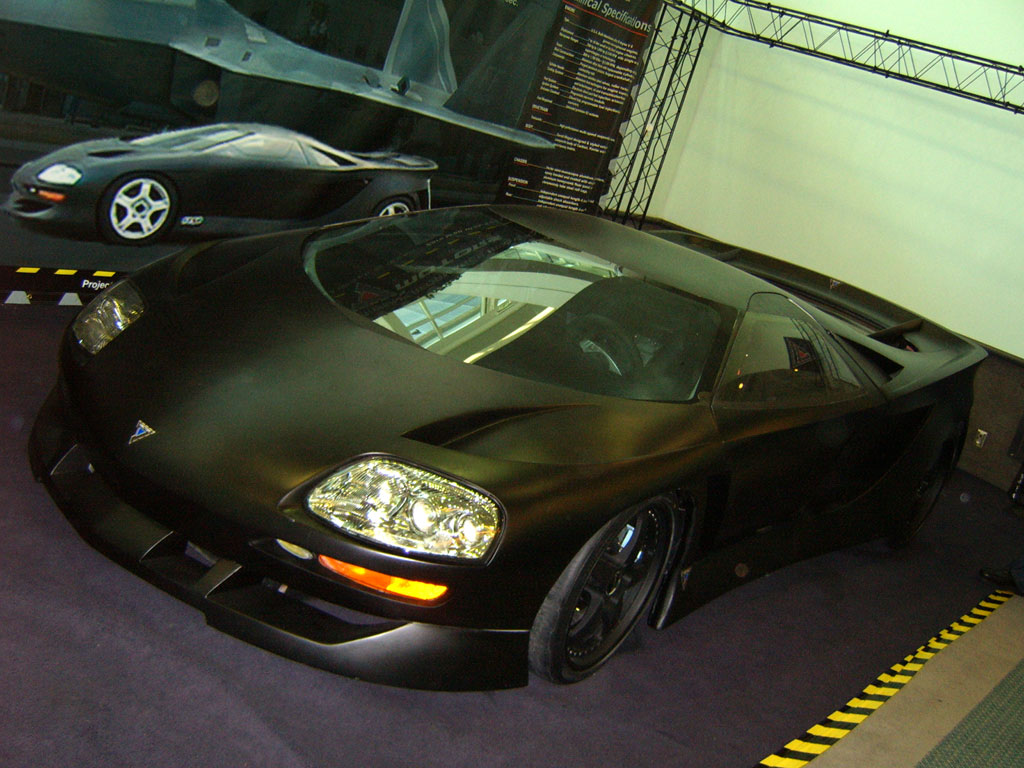The Vector W8 is a bit of an automotive legend, to say the least.
Aspiring car designer Jerry Wiegert had a dream. That dream was to create an all-American supercar that could hang with the Lamborghinis and Ferraris of the day. Perhaps knowing that he’d have to make something that stood out, Wiegert wanted to take a different approach to how the European manufacturers were doing things. He wanted something that was like a fighter jet for the road, built with technology developed in the aerospace industry. Hence, the eccentric Wiegert launched the Vector Aeromotive Corporation and set his plans to create his dream in motion.
Starting with the W2 demonstration vehicle in the 1970s, the development on Wiegert’s idea of an all-American supercar continued throughout the 1980s. The Vector W8 was finally released into the wild world of the supercar market in 1990, right at the end of that golden age of supercars.
Quirky, yet humble, underpinnings
As Doug Demuro’s videos on the Vector W8 (which you should absolutely watch if you want a cool overview of how utterly insane this car is) will tell you, it was a car that was full of those good old “quirks and features”. Fitting with Wiegert’s desire to make a fighter jet for the road by embracing things from the world of aerospace, the dashboard was designed like the instrument panel from a fighter plane of the 1980s.
This went as far as including an “engine hours” gauge just like an aircraft, an analogue compass presumably taken straight from the parts bin of a Cessna and (according to Wiegert) a genuine avionics screen to show the car’s speed, revs, fuel level and other important bits of data you might need to know. It even had a dial for a head-up display, although such a device was never fitted to the car. Vector was likely intending to fit one in the future, but that future never happened.
Another very weird part of the W8’s driving experience was the fact that you could control the level of boost from the turbos from the factory! This was done via a dial within the cabin that allowed you to easily reduce or increase the boost within a certain range. As Doug Demuro points out in one of his two videos on the car, this was because the engine had been designed to be a bigger displacement, less stressed engine than the smaller engines of European supercars.
Because the engine wasn’t as stressed by design, this meant that they could allow the drivers the freedom of going a bit mad with the boost if they wanted the full 700+ hp the car was reportedly capable of. Or, alternatively, they could dial the boost back for a more relaxed cruising experience or something with a bit less turbo lag (this car was designed in the 80s, remember… turbo lag was a very real thing!).
The Vector W8 also never had power steering or ABS. Reportedly, this was done to lower the vehicle’s weight, something I could imagine could be a bit of a problem considering the W8 looks like a pretty hefty vehicle. Then again, even in the early 1990s not a lot of cars had power steering or ABS, so maybe some buyers wouldn’t have thought too much of it.
Mixed within the quirkiness of the Vector is some oddly normal stuff. There are quite a few switches and stalks in the interior from the General Motors parts bin. The engine is a highly modified General Motors design. The transmission is a highly modified 3 speed General Motors Hydramatic automatic gearbox, something that has more in common with a 70s Rolls-Royce than a thoroughbred supercar. The seats are surprisingly like normal seats, too. It even has proper air conditioning and cruise control, like a luxury car of the day.
The balance of supreme quirkiness with elements of boring General Motors normality and even some semblance of comfort is part of the car’s charm. It’s a supercar done the American way and, if Wiegert’s interpretation of that is to be believed, the American way of creating a supercar is something very quirky and different indeed compared to what Europeans are used to.
Vector’s dark side
Unfortunately, the Vector W8 wasn’t without its problems and controversies. The first of those came when tennis superstar Andre Agassi attempted to take legal action against Vector for selling him a defective vehicle. The exhaust heat on his particular W8 had made the rear carpeting catch fire. Agassi wasn’t an innocent victim (he had demanded to have the car early and Vector had agreed on the condition that Agassi did not drive it until it was made safe and legal for the road) but this still put a massive dent in the car’s reputation. Having a huge incident like this early on never creates a good look, as Porsche and Ferrari would no doubt tell you thanks to their experiences with early production cars bursting
into flames!
There was also a certain amount of controversy centred around Jerry Wiegert himself. Wiegert would make claims about the W8 that were… well… bold. A couple of those claims were that the W8 could do 0-60 in 3.9 seconds and reach a top speed of 242 mph. This was debunked pretty quickly as soon as cars were available to car magazines to test. Car and Driver were especially scathing about the W8. All three of the cars they were sent for testing purposes broke down in different ways, leaving them unable to complete the tests. It even went as far as to say that the W8 was “vapourware” in a 2017 recap of its time with the cars.
Wiegert vs Megatech
This is where things got pretty nasty. One of Vector’s shareholders and primary investors was the Indonesian company Megatech, which also owned Lamborghini at the time. Megatech was clearly unhappy with Wiegert and decided to start a hostile takeover, buying the remainder of the company out and firing him.
At the same time, Megatech put a new Vector into production, the M12. The M12 was basically a Lamborghini Countach with a wild Vector-style body. This body was based on a prototype Wiegert had exhibited in 1993 called the WX-3. The only thing ‘Vector’ about the M12 was the styling; everything else was just taken straight from the Countach. The irony isn’t lost on me here, considering that the W8 was supposed to be a rival to the Countach!
This hostile takeover from his former investors led to Wiegert mounting a lawsuit, demanding all of the assets, trademarks and designs associated with Vector. He actually won the lawsuit, forcing Vector to fold for good and taking everything he wanted with him. The Vector Aeromotive Corporation produced its last car in 1999. By that point, it was a far cry from the company that had once made the W8.
Wiegert’s attempts to return
Wiegert has actually been planning a Vector revival for some time.
He’s exhibited a prototype for a new supercar called the WX-8, a car he claims is faster than the Bugatti Veyron and the SSC Ultimate Aero TT. Considering his past reputation of inflating figures and not being the greatest businessman in the world, however, that may not be something the world particularly wants right now.
Appreciated with time?
In spite of all of the Vector W8’s controversy and even the controversy surrounding Vector’s owner, I feel like it’s a car that should be appreciated much more than it is. In many ways, the W8 was ahead of its time. What other exotic car coming out of the 1980s or 1990s have proper air conditioning that actually worked, or electrics that didn’t fail because they were designed to aircraft standards, or cruise control, or nice comfortable seats, or anything else like that that the Vector W8 offered to its customers?
It wasn’t exactly a badly performing car either. Whilst it may have fallen well short of the 242 mph
top speed if the production cars were ever tested for it, it still managed to hit 0-60 in 4.2 seconds. For a supercar developed during the 1980s and launched during the early 1990s, that’s pretty fantastic!
It somehow manages to look even more radical than cars like the Countach did too, whilst at the same time being such a distinctive and unique design that it hasn’t become as dated as the Countach’s has. Yes, it’s all sharp edges and cyberpunk craziness, but hasn’t the Tesla Cybertruck proved that people kinda want cars to look like that? The slab-sided forms of the 80s and early 90s are coming back into fashion. Maybe with that, the W8’s Blade Runner looks will become more appreciated now than they were then.
My thoughts
What do I think about the Vector W8? Well, I absolutely love it. It’s genuinely one of my favourite cars of all time and has been for some years. It’s so utterly, brilliantly bonkers that you can’t help but love it. It’s a fantastic piece of spaceship styling that maybe was a bit too radical for 1990, but something that will go into the 2020s.
The Vector W8 is a classic example of what happens when a hungry idealist decides to create an all-American vision of a supercar. You have to at least feel enamoured by that!





Leave a reply